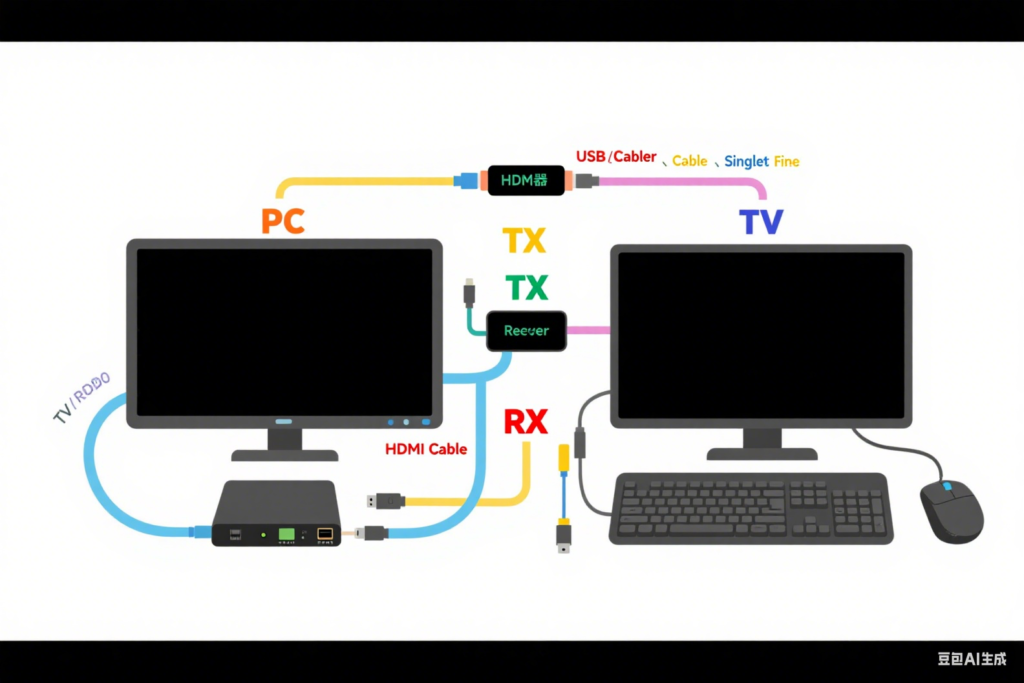If you’ve ever wondered how data travels across vast distances at lightning speeds, chances are an optical transceiver is hard at work behind the scenes. This fiber optic communication device is a unsung hero of modern connectivity, designed to extend data transmission distances through clever signal modulation and electro-optical conversion technologies. Let’s break down what it does and why it matters.
What Exactly Is an Optical Transceiver?
At its core, an optical transceiver is a two-in-one device: it acts as both a transmitter and a receiver, typically used in pairs to enable seamless communication. Here’s the play-by-play:
- The transmitter takes electrical signals (think data, voice, or video) and converts them into optical signals, which are then sent through fiber optic cables.
- The receiver does the opposite: it captures the optical signals from the fiber and converts them back into electrical signals, completing the loop.
Together with the fiber optic cable (the transmission medium), these two components form the backbone of a long-distance transmission system.
The Primary Functions of an Optical Transceiver
So, what makes this device so essential? Its functions boil down to two key roles:
- Multiplexing E1 Signals:
E1 signals are a standard for data transmission widely used in China and European countries. An optical transceiver can handle multiple E1 signals at once—ranging from as few as 4 to as many as 4,032—converting them into optical signals for efficient long-distance transmission. - Enabling Optical Communication Systems:
By converting between electrical and optical signals, transceivers serve as critical transmission equipment in industries like surveillance, power, telecommunications, and video streaming. They’re the reason you can stream a 4K video, make a long-distance call, or monitor a remote location without lag.
Types of Optical Transceivers and Their Specific Functions
Not all optical transceivers are created equal. Depending on the type of signal they handle, they specialize in different tasks:
1. Data Optical Transceivers
These are workhorses for digitizing and transmitting complex signals. Here’s how they operate:
- First, they digitize images, voice, and data signals.
- Then, they “multiplex” these digital signals—combining multiple low-speed signals into a single high-speed signal.
- This high-speed signal is converted into an optical signal for transmission.
- At the receiving end, the process reverses: optical signals become electrical, high-speed signals split back into low-speed ones, and finally, they’re converted back into images, voice, or data.
2. Audio Optical Transceivers
For analog audio (like music or voice), these transceivers simplify the process:
- At the transmitter, traditional analog audio signals are converted into optical signals.
- The optical signals travel through fiber optic cables to the receiver.
- The receiver converts them back into analog audio signals, ensuring clear, noise-free sound even over long distances.
3. Ethernet Optical Transceivers
Also called fiber optic transceivers, these bridge the gap between two network media: twisted-pair cables (copper) and fiber optics. They extend network transmission distances from a mere 2 km (with copper) to up to 100 km (with fiber)—no extra converters needed. Perfect for expanding local area networks (LANs) or connecting remote offices.
Bonus: HDMI Fiber Optic Extenders
While not a “transceiver” in the strictest sense, HDMI fiber optic extenders rely on similar tech to transmit high-definition video. Here’s how to set one up:
- Connect your HDMI source (e.g., a laptop or Blu-ray player) to the extender’s transmitter.
- Link the receiver to your display (a TV or video wall).
- Use a fiber optic cable to connect the SFP fiber interfaces of the transmitter and receiver.
- Power both devices on—if the indicator lights are on, you’re good to go!
These extenders support 4K×2K@60Hz resolution, auto EDID pass-through, and stable transmission, making them ideal for home theaters or conference rooms.
In short, optical transceivers are the backbone of modern communication, turning electrical signals into light and back again to keep our world connected. Whether it’s streaming, calling, or data sharing, they’re working tirelessly to make it all possible.
